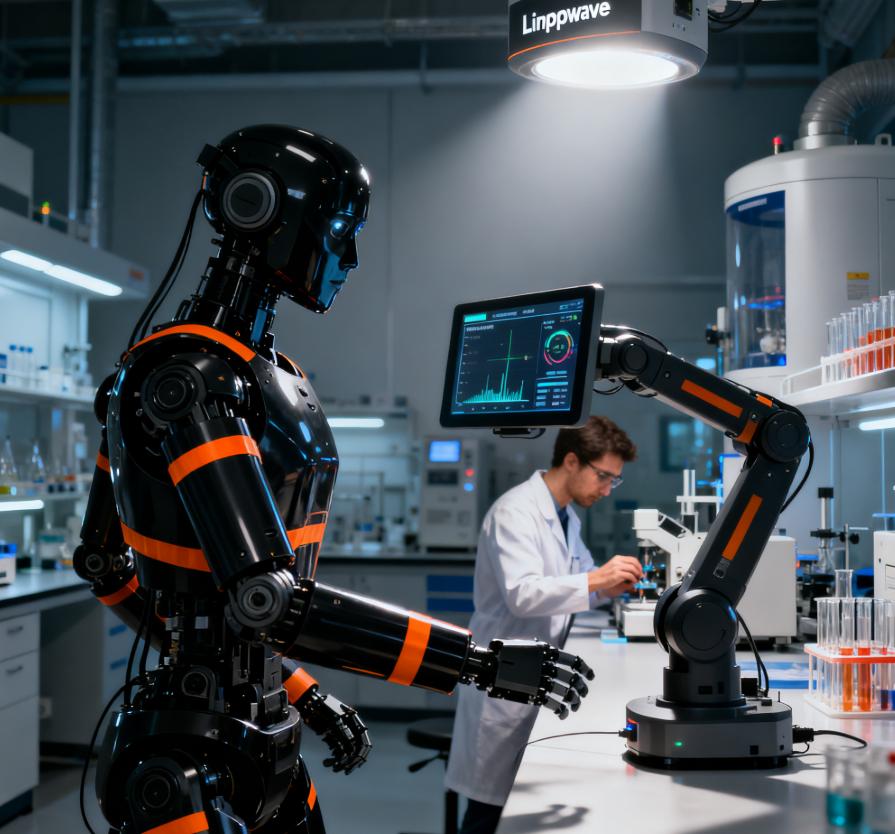Over the past decade, robotics has evolved from industrial automation into an era where machines are expected to work alongside humans — in homes, offices, and hospitals. The rise of humanoid robots marks a new milestone, but despite breakthroughs in mechanical engineering and artificial intelligence, one question remains unresolved: how can robots truly sense and understand the human world?
Vision-based systems alone cannot answer that question. Cameras and LiDAR depend heavily on lighting, line of sight, and environmental stability. A small shadow, reflection, or dust particle can disrupt their accuracy. For robots designed to interact with humans, that is not just inconvenient — it can be unsafe.
This is where millimeter-wave radar (mmWave radar) reshapes the landscape. By operating on electromagnetic principles instead of visible light, mmWave radar enables robots to “see” through darkness, fog, and even thin obstacles — providing a continuous stream of spatial awareness.
From Optical Vision to Spatial Intelligence
Traditional cameras excel at visual recognition but struggle in variable conditions. LiDAR, though precise, is expensive, energy-intensive, and sensitive to ambient light. By contrast, mmWave radar emits high-frequency electromagnetic waves (typically 60 GHz or 77 GHz) and measures their reflections to determine distance, velocity, and angle.
This allows robots to construct a 3D map of their surroundings that is independent of light or texture. It detects both static and moving objects with sub-centimeter precision and can even measure micro-movements — like a human chest rising during breathing.
A 2024 IEEE Spectrum report shows that visual-only humanoid robots experience a 40–60% drop in detection accuracy in low-light or obstructed environments. mmWave radar, however, maintains stable detection with less than 5% performance degradation.
This capability makes it an ideal complement to AI-powered perception systems, enabling humanoid robots to recognize human activity, navigate safely, and interact naturally — even in the most unpredictable conditions.
The Role of Linpowave mmWave Radar in Robotic Perception
At Linpowave, radar technology has evolved far beyond basic motion sensing. By combining AI-enhanced radar algorithms with multi-channel signal processing, Linpowave modules enable humanoid robots to achieve human-like environmental awareness.
For instance, Linpowave’s 77 GHz radar platform operates across a 76–81 GHz bandwidth, achieving:
-
Distance accuracy: ±5 cm
-
Angular resolution: <1°
-
Frame refresh rate: Up to 20 Hz
Meanwhile, its 60 GHz modules offer compact design and low power consumption, ideal for embedded use in humanoid robot joints, torsos, or heads.
By integrating radar sensing into multiple axes of a humanoid system, robots gain 360° environmental understanding — they can detect a person entering a workspace, estimate their distance and motion vector, and adapt accordingly.
Learn more about radar-based presence detection and motion tracking at the
Linpowave Applications Page.
This combination of precision and adaptability creates the foundation for robots that are not just reactive, but context-aware and self-learning.
Understanding Humans Through Motion: Beyond Cameras
One of the hardest challenges in humanoid robotics is interpreting human intent. Cameras may identify a gesture, but radar can capture the underlying motion signature — the small, continuous body movements that reveal presence, posture, and rhythm.
Linpowave’s mmWave radar modules can detect even the faintest micro-motion, allowing robots to:
-
Recognize if a person is sitting, walking, or lying down
-
Detect vital signs like breathing or minor movements
-
Differentiate multiple humans in the same space
-
Monitor safety zones without invading privacy
This level of awareness is essential for robots in healthcare, logistics, and home-assistance roles. Unlike visual systems, radar-based sensing does not require image capture — meaning it preserves privacy while still offering high accuracy and reliability.
In high-traffic workplaces, this translates into smarter collaboration. Robots can adjust their behavior when humans approach or predict collisions before they occur — reducing risk and improving workflow efficiency.
Built for All Conditions: Reliability and Safety
Environmental reliability is another reason mmWave radar is indispensable for humanoid systems. Whether in dusty warehouses, dark corridors, or outdoor areas, radar maintains consistent performance. It can detect obstacles, walls, and human presence through smoke or plastic surfaces — conditions that easily blind optical sensors.
According to MarketsandMarkets (2025), the global humanoid robot sensor market will grow at a 32.5% CAGR through 2030, with mmWave radar identified as the fastest-growing technology segment.
This growth aligns with the industry’s shift toward multi-modal sensor fusion, where radar, vision, and AI inference work together to create robust environmental awareness. Linpowave’s radar products are built with this philosophy — offering open interfaces like UART, CAN, and SPI to integrate seamlessly with modern robotic control systems.
Explore Linpowave’s Product Portfolio for integration-ready radar modules and evaluation kits.
From Perception to Intelligence: The Data Loop
One of the hidden strengths of mmWave radar is its ability to generate training data for AI.
Each radar-equipped robot continuously collects spatial and motion information, which can be used to train neural networks for gesture recognition, object classification, and path prediction.
Linpowave supports edge computing and mmWave data offloading, allowing fleets of humanoid robots to share experience and improve collectively. When one robot learns how to handle a complex motion or environment, that knowledge can propagate across the network — a true collective intelligence.
This is a major step toward robots that continuously evolve, adapting to the people and spaces around them.
Scaling Toward a Human-Centered Future
Humanoid robots are no longer confined to research labs. With advancements in modular design, efficient actuators, and radar-powered awareness, they are gradually entering manufacturing, logistics, and home environments.
The next frontier is not only mechanical dexterity but perceptual understanding — knowing when to act, pause, or assist. mmWave radar gives robots the sensory depth to coexist safely and meaningfully with humans.
Linpowave’s mission aligns closely with this evolution: enabling human-compatible radar intelligence that makes every interaction between man and machine smoother, safer, and smarter.
Frequently Asked Questions (FAQ)
Q1: What advantages does mmWave radar offer over optical or ultrasonic sensors?
mmWave radar captures 3D spatial data (distance, velocity, angle) instead of just distance. It can detect both motion and micro-motion even in poor lighting or through thin materials, giving humanoid robots reliable perception in all conditions.
Q2: Can Linpowave radar modules integrate with existing AI vision systems?
Yes. Linpowave radar modules are designed for sensor fusion, enabling joint data processing with depth cameras or LiDAR. This enhances recognition accuracy and ensures robust detection even in complex environments.
Q3: How does radar ensure privacy in domestic or workplace use?
Unlike cameras, mmWave radar does not capture visual imagery. It only processes reflected waveforms to generate point clouds, making it ideal for privacy-sensitive applications such as home assistants and healthcare monitoring.
Q4: What are typical humanoid robot use cases for mmWave radar?
Human presence detection, gesture recognition, safety-zone monitoring, fall detection, and activity tracking in homes, factories, and medical facilities.
Q5: What’s next for radar in humanoid robotics?
As processing power increases, radar will shift from being a supporting sensor to a primary perception layer, enabling humanoid robots to interpret human intent and collaborate seamlessly.



